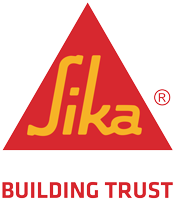Waterproofing concrete in aggressive environments – understanding the issues
Choosing the right waterproofing system for wastewater plants and industrial chemical environments reduces unplanned downtime and total cost of ownership
Concrete structures in wastewater plants and industrial chemical environments are constantly exposed to attack from aggressive acids. Concrete damage is extremely costly and can even take a facility out of action entirely.
Choosing the right system
There are various systems available to protect concrete. The selection of the protective system has a major effect on the speed of application and curing, the time required for maintenance and the frequency with which it needs to be carried out. All these issues have direct financial consequences.
Protecting against acid attack
In wastewater treatment plants, for example, the interaction of different types of bacteria can lead to "biogenic sulfuric acid corrosion". The bacteria create drops of concentrated sulfuric acid on the walls of the sewer or tank, which cause structural damage to concrete. The fats contained in wastewater can also break down into aggressive organic acids.
Abrasion and impact resistance
Over time, the constant impact of large solids carried in wastewater effluent begins to wear down the structure of concrete. This allows chemicals to penetrate and start causing damage. At the same time, finer solids in the effluent sink to the bottom and cause abrasion as they are carried along with the flow. Surface demage is the inevitable result.
The importance of crack bridging
As well as being resistant to chemical attack, it is vital that your chosen waterproofing system is capable of bridging cracks. To do this, it must be able to absorb potential movement within the structure and maintain its integrity across hairline cracks. This will stop these cracks breaking through the coating and compromising its continuity and thus its performance.
Tolerance to moisture
With the exception of loose linings, all protective coatings and membranes need to adhere strongly to the concrete substrate to perform as designed. This can involve complex and time-consuming preparation and application processes. Even then, the results are not always successful. Resin-based products are the only choice for such aggressive conditions, but they need careful handling to achieve their effect. For example, popular current technologies like vinylester, epoxy or polyurethane cannot tolerate more than ca. 4% moisture content in the substrate they are being applied to. This means that they cannot be applied to structures that have recently held water.
The solution: MasterSeal 7000 CR
Developed by BASF's Master Builders Solutions, the MasterSeal 7000 CR coating system was specifically designed to meet the needs of aggressive wastewater treatment and industrial chemical environments.
All claims made below have been tested and verified against international standards under laboratory conditions and in actual operating conditions. We will be pleased to provide you with documentary evidence.
Easy to apply – even on wet concrete:
MasterSeal 7000 CR can be sprayed or rolled directly onto wet concrete, without compromising adhesion or protection. This means it can be applied immediately after emptying a structure of water or during bad weather conditions.
Extremely strong adhesion:
In both laboratory and field tests, MasterSeal 7000 CR proved so strong that the surface of the concrete broke away before the adhesive did.
Stable and tough:
The crack-bridging properties of MasterSeal 7000 CR have been tested to EN 1504 Part 2 using both static and dynamic methods.
Rapid return to service:
The fast curing properties of MasterSeal 7000 CR mean that it is fully cured and ready for use 24 hours after application at 20°C. Recoating times between primer and membrane and between layers of the membrane are just 5 and 8 hours respectively at 20°C.
Proven durability under lab conditions:
At the Fraunhofer Institute in Germany, MasterSeal 7000 CR was exposed to a simulated period of 48 to 60 months in live sewage conditions. The aim was to establish its resistance to biogenic sulfuric acid corrosion. When adhesion was tested, the concrete itself broke away before the adhesive did.
Proven durability under actual operating conditions:
MasterSeal 7000 CR has been tested in a variety of real-life applications. Here is just one example. A thickener tank was refurbished after the failure of other protective membranes.
After 6 months of exposure to the conditions inside the tank, the MasterSeal 7000 CR membrane was visually inspected and subjected to mechanical adhesion tests.
There was no visible damage to the membrane. Adhesion results of >1.8 N/mm2 were achieved, with all failures down to the concrete substrate itself.
MasterSeal 7000 CR – the protective membrane for wastewater treatment plants and industrial chemical environments.
MasterSeal 7000 CR Technical Data Sheet - Click here
With its unique combination of application and performance properties, MasterSeal 7000 CR is the ideal solution for waterproofing and protecting concrete wastewater treatment structures and sewers.
MasterSeal 7000 CR build-up: MasterSeal P 770: primer (yellow) MasterSeal M 790: membrane (red)

Product Application
Spray Application of MasterSeal 7000 CR
Hand Application of MasterSeal 7000 CR


